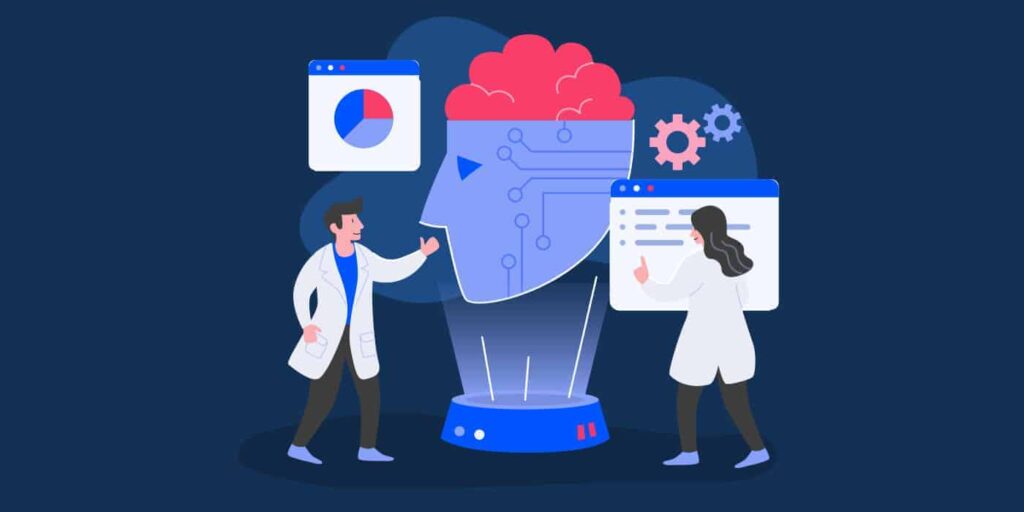Because artificial intelligence (AI) is rapidly changing many of the IT service management (ITSM) operations and tasks we deal with regularly, the time is ripe for disruption of the IT service desk industry. To help explain “the art of the AI possible,” this article looks at the key areas that service desk managers should understand about AI as it transforms our industry.
What AI is and isn’t: AI is different from automation
AI and automation are often used interchangeably, but it’s essential to understand how they’re different. With automation, you’re trying to offload technology tasks that are typically done manually and are repetitive and prone to error. Essentially, automation is about following a specific set of instructions, usually set by a person. The technology is bound by the instructions or rules, with it simply “following orders.”
Artificial intelligence, on the other hand, is about emulating human behavior in terms of language, forms, concepts, and abstractions. AI requires a much higher level of complexity and “thinking” in terms of how to replicate a human’s behavior. And experience-based machine learning technology learns new patterns and outcomes to improve, rather than relying on a person to give it new instructions.
So then, we can think of automation as doing the heavy lifting, and of AI as doing some of the heavy lifting but also the heavy thinking. And that AI and automation can work together such that the AI technology invokes automated actions.
IT service desk managers need to be wary, though, of products and services that are sold as though they’re AI when they’re really only automation. An example is scripted chatbots with pre-programmed logic and flows – this is automation rather than true AI. This kind of automation can be helpful to a degree, but buyers need to be clear about what they’re getting – to avoid confusion and disappointing results.
AI service desk capabilities and ITSM
AI is very much about looking for opportunities to address, aid in, and improve tasks that humans do today based on continuous learning and reasoning. But it’s also about being able to go beyond human capabilities – at least in terms of how long a task takes.
Sometimes the concept of AI sounds overly futuristic – conjuring up images of the replicants in Blade Runner, for instance – but the reality is that AI is already being implemented into many service management tools. There are many opportunities for AI exploitation in the world of service management and support, including the service desk experience and process and application automation.
AI can be used to take care of the immediate, but necessary, tasks that can get in the way of tackling bigger, strategic projects that ultimately drive the business forward. Chatbots and/or digital agents are just one example of how AI can free people from repetitive, time-consuming tasks of taking phone calls or engaging with end users through e-mail conversations to determine details about the issues end user is facing. Identifying and determining details of end-user issues needs “intent recognition” and classification. This can then be coupled with automation to resolve user issues in minutes.
Another example of tasks addressed by AI today is the classification of tickets and dispatch to workgroups and to actual agents for faster resolution based on continuous learning of ticket data.
Self-service resolution for end users – whereby they’re provided pertinent knowledge articles to resolve their issues at hand. And operational intelligence for analysts to determine the context of incidents and providing past incident data, and pertinent knowledge articles, are also examples of how AI is already being built into ITSM tools.
What service desk managers can do to prepare for this AI service desk transition
As noted above, understanding the difference between automation and AI – as well as their intersection – is key. This helps create insight into how these technologies will best serve your IT service desk needs and the wider organization as a whole.
Ensure that business needs are being put first and that your organization is not just adopting technology for the “cool” factor or “because we can.” And don’t just look to replicate manual processes, but instead start to evaluate how AI can truly be transformative, applied to long-standing or industry-wide challenges.
For these reasons, you’ll need to apply many of the same checks to AI capability adoption that you would to any other new technology solution, such as:
- Ensuring that your AI adoption does not descend into a disjointed or siloed approach, as so many technology investments have in the past.
- Making sure in advance that the right people and skills are available – from those who can get the most out of AI solutions to those who will use it on a daily basis.
Choose and deploy AI wisely
Certainly, there are other checks that could be added to this list, but use these two as a place to start in ensuring that your preparation is focused on the desired outcomes of AI adoption rather than the technology itself. AI, especially when coupled with automation, has the capability to transform the IT service desk. It’s already been built into ITSM tools, and more AI-enabled capabilities are on their way. But beware that some automation solutions are being marketed as AI when that’s not actually the case.
If you’re able to ask the right questions and implement for the right reasons, your business stands to soar above the competition with better-than-human support abilities that serve your employees and customers in exciting new ways.
Dr Akhil Sahai
Dr. Akhil Sahai, is Chief Product Officer and founding member of Kanverse.ai. He is an accomplished executive with the 20+ years of extensive experience, in managing high growth, multi-hundred million dollar product portfolios and their GTMs at large Enterprises like LexisNexis, HP, Dell, Cisco, VMware, and of having scaled startups as Head of Products, like Gale Technologies (acquired by Dell), Perspica Inc. (acquired by Cisco) and Symphony SummitAI. He has a Ph.D. from INRIA France and an MBA from Wharton School. He has 17 technical patents, has authored a book, and has published 80+ technical peer-reviewed articles.

